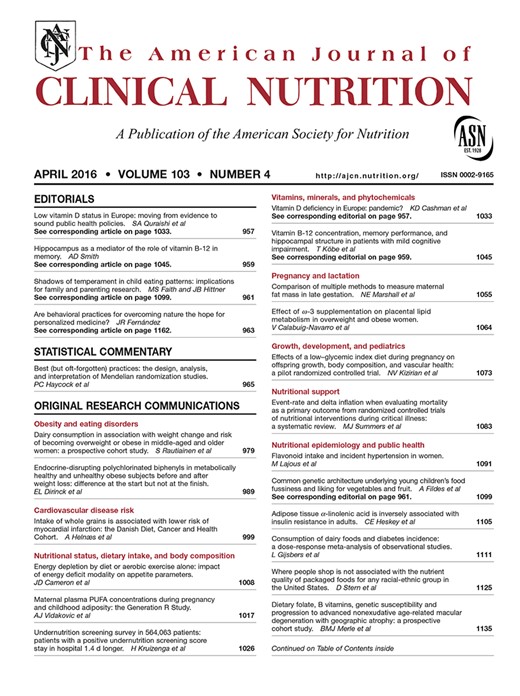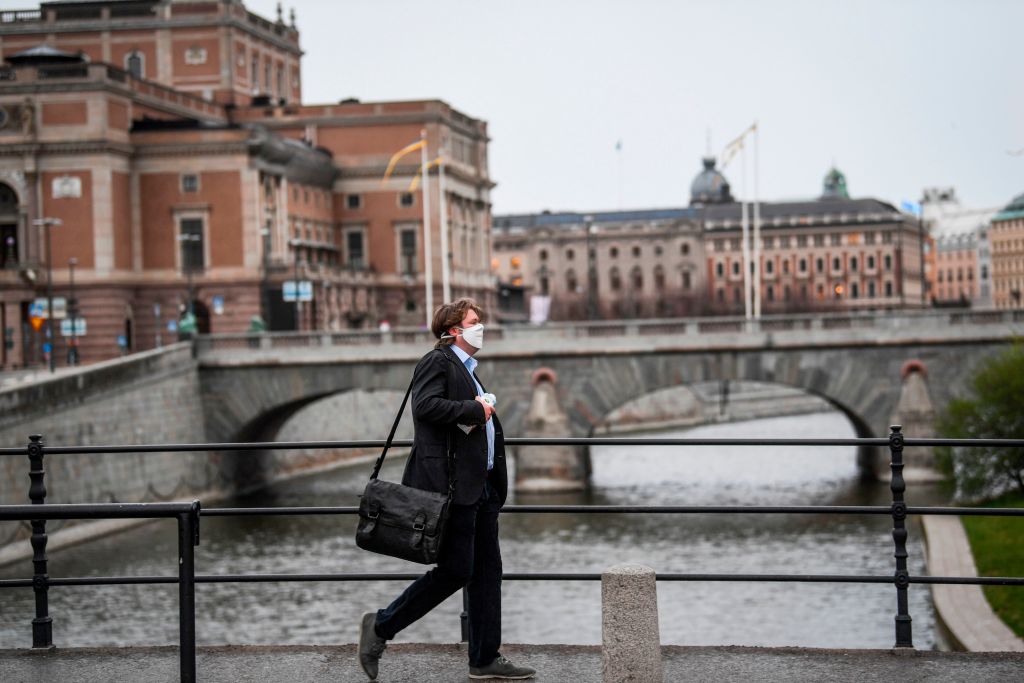From what I was hearing, the Mayors office was getting some heavy duty blowback.They finally changed the rules in Gloucester regarding boat ramp use. One person/boat at a time at the ramp.
-
If you enjoy the forum please consider supporting it by signing up for a NES Membership The benefits pay for the membership many times over.
You are using an out of date browser. It may not display this or other websites correctly.
You should upgrade or use an alternative browser.
You should upgrade or use an alternative browser.
MA shut down well into June???.....Wife’s work says so.
- Thread starter SgtHal75
- Start date
What I posted in the other thread:
MedCram: Dr. Seheult on supplements:
View: https://www.youtube.com/watch?v=NM2A2xNLWR4
On D generally:
Scroll down to "Acute Respiratory Infections"Vitamin D
Contents Summary Function Metabolism Mechanisms of action Calcium balance Phosphorus balance Cell differentiation Immunity Insulin secretion Blood pressure regulation Deficiencylpi.oregonstate.edu
Vitamin D and Immunity:
View: https://www.youtube.com/watch?v=W5yVGmfivAk
On D3 and K2:
(The K2 keeps the D from dropping calcium into arteries instead of bones and teeth.)
The Synergistic Interplay between Vitamins D and K for Bone and Cardiovascular Health: A Narrative Review
Vitamins D and K are both fat-soluble vitamins and play a central role in calcium metabolism. Vitamin D promotes the production of vitamin K-dependent proteins, which require vitamin K for carboxylation in order to function properly. The purpose of this ...www.ncbi.nlm.nih.gov
On D deficiency in Europe (but not so much places like Iceland where they love their cod liver oil):

Vitamin D deficiency in Europe: pandemic?
ABSTRACT. Background: Vitamin D deficiency has been described as being pandemic, but serum 25-hydroxyvitamin D [25(OH)D] distribution data for the European Unioacademic.oup.com
Yup - A as well. That's actually something of a concern with the cod liver oil - overdoing A and it causing problems. Eating polar bear liver can, too:
:quality(70)/s3.amazonaws.com/arc-wordpress-client-uploads/adn/wp-content/uploads/2016/12/18170959/CLIMATE_POLAR_BEARS_10.jpg)
The perils of eating polar bear
Very few of us can eat polar bear — and even among those who can or have in the past, there's a wide range of opinion on how palatable or delectable it is. Its liver can contain lethal amounts of vitamin A.www.adn.com
![Grin [grin] [grin]](/xen/styles/default/xenforo/smilies.vb/041.gif)
This video takes a bit of a time commitment to get through but, I found it to be quite informative for understanding the role of vitamin D
View: https://www.youtube.com/watch?v=v3pK0dccQ38
Personally, I normally take around 5K IU daily from fall through early spring and then pull back a bit during the warmer weather when I'm getting more sun. my understanding is that 5k IU daily is nowhere near toxicity levels. Hell, some doctors treat breast cancer patients with doses of over 10K IU daily.
Reader warning... The company I work for is Italian owned and headquartered in Rome, so the actions they take may be distorted by their narrow view of the world. It is a large global company (+/- 70K employees) and it is extremely risk-averse.
Having said that, company employees received a communication today from our CEO advising us that given the global uncertainty of what constitutes safe actions with this virus, lack of vaccine, and yadda, executive leadership has decided that our current WFH requirement will be continued for all employees who can effectively work from home until the end of this year. Holy crap! 8 more months (at least) of working from home.
Mind you, there are some unique factors at play here. Our company has a very strict formula for sizing office space with a minimal allocation of square footage per occupant. They also make extensive use of shared workspaces. I've been to our offices in Rome and the whole concept is strange. Most workers do not have assigned workspaces. You may sit at one desk in the morning and then someplace else after lunch. For them to safely bring workers back into these offices, they'd need to reduce occupancy by half to two-thirds. In order to bring everyone back into offices, we'd need tons of additional office space, which would be cost-prohibitive.
Also, in Italy, the job market is considerably different compared to here. In Italy, the market feels more like the 1940s and 1950s in this country. In Italy, you are not focussed on career and always preparing for the next job. You graduate from school, go to work for some period of time as a contractor while you prove your work ethic and value with the hope of eventually earning a permanent contract with the company.
Once on a permanent contract, you receive no salary increases while in the position you were hired for. Unless you are able to change positions within the company, your salary stays the same. If you perform well, you will receive an annual bonus. There are no annual merit or COL increases. This was a huge area of contention when the American company I worked for was purchased. the managers in Italy cannot get their minds around the salary demands of the American workers. We've lost a ton of talent because of it. For Italians working for this company, they are basically there for their entire career and they fill whatever position the company requires them in.
Now, there are discussions in the company about how much financial investment will be required to ensure all WFH employees have home work arrangements that allow for maximum productivity and provide for work environments that meet health and safety requirements. The challenges are significant. For instance, my Italian manager has a home in Milan which (like many European residences) has no AC. Summer is around the corner and those residences will be like ovens during the day. what does that do to productivity? So now we are dealing with questions like, can the company subsidize the cost of acquiring AC units and the electricity required to run them?
I suspect that many of our employees will never return to work in an office.
Having said that, company employees received a communication today from our CEO advising us that given the global uncertainty of what constitutes safe actions with this virus, lack of vaccine, and yadda, executive leadership has decided that our current WFH requirement will be continued for all employees who can effectively work from home until the end of this year. Holy crap! 8 more months (at least) of working from home.
Mind you, there are some unique factors at play here. Our company has a very strict formula for sizing office space with a minimal allocation of square footage per occupant. They also make extensive use of shared workspaces. I've been to our offices in Rome and the whole concept is strange. Most workers do not have assigned workspaces. You may sit at one desk in the morning and then someplace else after lunch. For them to safely bring workers back into these offices, they'd need to reduce occupancy by half to two-thirds. In order to bring everyone back into offices, we'd need tons of additional office space, which would be cost-prohibitive.
Also, in Italy, the job market is considerably different compared to here. In Italy, the market feels more like the 1940s and 1950s in this country. In Italy, you are not focussed on career and always preparing for the next job. You graduate from school, go to work for some period of time as a contractor while you prove your work ethic and value with the hope of eventually earning a permanent contract with the company.
Once on a permanent contract, you receive no salary increases while in the position you were hired for. Unless you are able to change positions within the company, your salary stays the same. If you perform well, you will receive an annual bonus. There are no annual merit or COL increases. This was a huge area of contention when the American company I worked for was purchased. the managers in Italy cannot get their minds around the salary demands of the American workers. We've lost a ton of talent because of it. For Italians working for this company, they are basically there for their entire career and they fill whatever position the company requires them in.
Now, there are discussions in the company about how much financial investment will be required to ensure all WFH employees have home work arrangements that allow for maximum productivity and provide for work environments that meet health and safety requirements. The challenges are significant. For instance, my Italian manager has a home in Milan which (like many European residences) has no AC. Summer is around the corner and those residences will be like ovens during the day. what does that do to productivity? So now we are dealing with questions like, can the company subsidize the cost of acquiring AC units and the electricity required to run them?
I suspect that many of our employees will never return to work in an office.
Not sure what this means.Tracking on the flu vaccine vs. just a shot
Last edited:
Tracking = I understand what you are talking aboutNot sure what this means. A lot of your vitamin talk is.
jkerm3
NES Member
Just open up the f’ing golf courses. Just for walking even. Just stagger the tee times a bit more and there will be no crowds. Not that hard to “social distance” 6 feet with three buddies. Come to think of it, I try to stay more than 6 feet from most of them during normal times lol.

Protesters gather at Massachusetts State House to protest coronavirus closures
Hundreds of protesters gathered at the Massachusetts State House in Boston on Monday to demonstrate against the closures ordered during the coronavirus pandemic. The demonstrators called for n…
My buddy lives in FL. They book online. Clubhouse closed. One person per cart. No biggie.Just open up the f’ing golf courses. Just for walking even. Just stagger the tee times a bit more and there will be no crowds. Not that hard to “social distance” 6 feet with three buddies. Come to think of it, I try to stay more than 6 feet from most of them during normal times lol.
They open the beaches for 3-6 hours a day. No chairs - you have to keep walking. Seems to work fine.
Another couple of weeks and it's going to get sporty I'm thinking.

This actually sounds fun. Golf cart races AND golf.My buddy lives in FL. They book online. Clubhouse closed. One person per cart. No biggie.
MA seems to be flattening out. These are the numbers I personally rely on.
In the meantime, most of NH is doing pretty well, (although 30% more than VT and 108% more than ME in total cases) with fewer than 100 hospitalizations. While Nashua now has over 200 cases, Manchester is the hotspot.
4/13 report: 156
4/20 report: 272 - 74% increase
4/27 report: 405 - 49% increase
5/3 report: 529 - 31% increase

- MA has been testing roughly 10K per day since early April. Percentage of those tested positive has been dropping since April 22: from a peak of 34% to 10% yesterday.
- Net hospitalizations have been decreasing since April 21.
- Daily deaths declining since April 22.
In the meantime, most of NH is doing pretty well, (although 30% more than VT and 108% more than ME in total cases) with fewer than 100 hospitalizations. While Nashua now has over 200 cases, Manchester is the hotspot.
4/13 report: 156
4/20 report: 272 - 74% increase
4/27 report: 405 - 49% increase
5/3 report: 529 - 31% increase

Dennis in MA
NES Member
- Joined
- Feb 12, 2007
- Messages
- 38,219
- Likes
- 33,152
% increases aren't as meaningful as the increase in the NUMBER of cases. 272-156=116. 405-272=133. 529-405=124. Maybe it's peaked in Manch.
It's gonna be great to see people back to work with FORCED facial covering trying to answer phones. LOL. We're all gonna sound like the teacher on Peanuts.
It's gonna be great to see people back to work with FORCED facial covering trying to answer phones. LOL. We're all gonna sound like the teacher on Peanuts.
I suspect that many of our employees will never return to work in an office.
I expect that will be true, or sort of true, in the US as well. I think that many people whose jobs permit WFH will be encouraged (strongly) to do so for much of the rest of this year, and I expect that employer tolerance for WFH will be much higher going forward, for the long term. Over the short term, the logistics of getting people into many buildings (health checks, elevators where applicable, distancing, disinfecting which goes up with numbers) are going to drive employers to try to keep as many people as possible -out- of the company's facilities.
It's gonna be great to see people back to work with FORCED facial covering trying to answer phones. LOL. We're all gonna sound like the teacher on Peanuts.
OK, that cracked me up.
caboose84
NES Member
Mind you, there are some unique factors at play here. Our company has a very strict formula for sizing office space with a minimal allocation of square footage per occupant. They also make extensive use of shared workspaces. I've been to our offices in Rome and the whole concept is strange. Most workers do not have assigned workspaces. You may sit at one desk in the morning and then someplace else after lunch.
Sun Microsystems did much the same thing for work space back in the late 90's, primarily for those who were in sales or field service and normally were out at customers, or could work from home.
We no longer had assigned desks or cubicles, you got a locker at your primary location to store personal items. You could reserve a small office or cube for the time you would be in the office, it had a terminal in it, your badge would migrate your desktop to it, and you assigned your phone extension to the handset. For tech support we had labs we could set up systems in to work with for problem recreation, guys who supported hardware we'd set up labs to play around in. It worked in saving money on office space and buying desktop equipment. The desktop migration worked pretty well, if I traveled to an office in NY or California, plugging in my badge brought my environment right up, sometimes a little slow. Moving my phone extension worked great.
It did damage the camaraderie, since there was no longer an expectation of being in the office regularly, interactions with co-workers would depend on meetings more so than day to day shooting the shit with the guys in the other cubes.

Sweden tames its ‘R number’ without lockdown
Sweden has been the world’s Covid-19 outlier, pursuing social distancing but rejecting mandatory lockdown. Schools, bars and restaurants are open – albeit with strong voluntary social distancing compliance and streets that often look almost as empty as Britain’s. Has this been enough? Sweden’s...
The R number is based on infection rates, which appear to be severely undercounted in Sweden, probably because they don't want criticism for their response. Otherwise, they have a spectacularly high death rate, with more than 12% of the infected dying. I don't think they're more susceptible, Swedes are healthy, it's undercounting. They have about the 7th highest in the world per capita in deaths.
Sweden tames its ‘R number’ without lockdown
Sweden has been the world’s Covid-19 outlier, pursuing social distancing but rejecting mandatory lockdown. Schools, bars and restaurants are open – albeit with strong voluntary social distancing compliance and streets that often look almost as empty as Britain’s. Has this been enough? Sweden’s...www.spectator.co.uk
According to this they are 10th. Below Spain, Italy, UK, France, and Netherlands.The R number is based on infection rates, which appear to be severely undercounted in Sweden, probably because they don't want criticism for their response. Otherwise, they have a spectacularly high death rate, with more than 12% of the infected dying. I don't think they're more susceptible, Swedes are healthy, it's undercounting. They have about the 7th highest in the world per capita in deaths.

Coronavirus Update (Live): 126,069,031 Cases and 2,767,376 Deaths from COVID-19 Virus Pandemic - Worldometer
Live statistics and coronavirus news tracking the number of confirmed cases, recovered patients, tests, and death toll due to the COVID-19 coronavirus from Wuhan, China. Coronavirus counter with new cases, deaths, and number of tests per 1 Million population. Historical data and info. Daily...
Personally consider it an open experiment.
My very non-scientific observation, based on nothing more than reading various newspapers, is that the data is all over the place, which means trying to quantify trends is really just a GIGO exercise. Testing varies wildly from place to place, and protocols for counting deaths are also wildly variable. I read something last week about how NYC had been counting (or, really, avoiding counting) probable COVID-19 deaths that left me with a very clear impression that NYC's numbers were seriously flawed. The 12% rate you mention sort of proves the point, from another direction.The R number is based on infection rates, which appear to be severely undercounted in Sweden, probably because they don't want criticism for their response. Otherwise, they have a spectacularly high death rate, with more than 12% of the infected dying. I don't think they're more susceptible, Swedes are healthy, it's undercounting. They have about the 7th highest in the world per capita in deaths.
Dennis in MA
NES Member
- Joined
- Feb 12, 2007
- Messages
- 38,219
- Likes
- 33,152
According to this they are 10th. Below Spain, Italy, UK, France, and Netherlands.

Coronavirus Update (Live): 126,069,031 Cases and 2,767,376 Deaths from COVID-19 Virus Pandemic - Worldometer
Live statistics and coronavirus news tracking the number of confirmed cases, recovered patients, tests, and death toll due to the COVID-19 coronavirus from Wuhan, China. Coronavirus counter with new cases, deaths, and number of tests per 1 Million population. Historical data and info. Daily...www.worldometers.info
Personally consider it an open experiment.
Causal and correlated isn't the same thing.
Sweden, with no significant shutdown, has 2.3 people per thousand infected. The US with a MAJOR shutdown is up to 3.7 per thousand. It can't be that MORE sheltering is harming us.
Part of this is probably how the Swedes view "government" and how we do. Look at the people on this board. "Wear a mask? FU! I'm free, dammit!" Free may mean you CAN act like a tool and risk others' lives. But being a responsible, not-kicked-in-the-nuts-by-Jefferson-and-Washington-if-this-was-1790 adult is also part of being free. You don't have to exercise your freedom to be a d-word just to feel free.
Not to mention even the non-freedom caucus is full of some of the most selfish people in the world. We are just selfish. Period. And this me-first attitude is causing us to have a worse time with the virus than most places. Because we are entitled pieces of crap.
(Not to say that our government is any bastion of responsibility that should be followed blindly - not for a second. But you get that FROM the disaster we've wrought with our selfishness. I digress. . . )
Now, the Swedes are the complete opposite. It is built into their social DNA that what is good for one is good for all. So there is a sense of all-in-this-together. So I'm betting minor changes (distancing, self-awareness) went a LONG way to deferring any problems. They also have a national sense of good health, which helps versus a place like Italy.
But JUST saying, "They didn't quarantine and they made it" is a bogus statement because there is too much to unpack behind it.
Causal and correlated isn't the same thing.
Sweden, with no significant shutdown, has 2.3 people per thousand infected. The US with a MAJOR shutdown is up to 3.7 per thousand. It can't be that MORE sheltering is harming us.
Part of this is probably how the Swedes view "government" and how we do. Look at the people on this board. "Wear a mask? FU! I'm free, dammit!" Free may mean you CAN act like a tool and risk others' lives. But being a responsible, not-kicked-in-the-nuts-by-Jefferson-and-Washington-if-this-was-1790 adult is also part of being free. You don't have to exercise your freedom to be a d-word just to feel free.
Not to mention even the non-freedom caucus is full of some of the most selfish people in the world. We are just selfish. Period. And this me-first attitude is causing us to have a worse time with the virus than most places. Because we are entitled pieces of crap.
(Not to say that our government is any bastion of responsibility that should be followed blindly - not for a second. But you get that FROM the disaster we've wrought with our selfishness. I digress. . . )
Now, the Swedes are the complete opposite. It is built into their social DNA that what is good for one is good for all. So there is a sense of all-in-this-together. So I'm betting minor changes (distancing, self-awareness) went a LONG way to deferring any problems. They also have a national sense of good health, which helps versus a place like Italy.
But JUST saying, "They didn't quarantine and they made it" is a bogus statement because there is too much to unpack behind it.
Afganistan North is in the top for alcoholism, depression, suicides, rapes and SJWism ... no thanks, f*** them and the camels they rode in. When you are ready to trade your freedom for 1.4% better outcome in Corona cases, you'll get neither.
I am disenfranchised minority in a commie state, I hold my middle finger high to the lord Faker and caunt Mora.
Dennis in MA
NES Member
- Joined
- Feb 12, 2007
- Messages
- 38,219
- Likes
- 33,152
I see what you did there you clever mis-speller. LOL
National Review said 7th going to 6th. I think they're excluding the three countries on your source above them that have less than 85,000 people each as being too small to count. Regardless, I'm not sure "Top 10" in this category is a good thing.According to this they are 10th. Below Spain, Italy, UK, France, and Netherlands.
peterk123
NES Member
You think?
SpaceCritter
NES Member
A VASTLY disproportionate share of Sweden's adverse outcomes are migrants, who tend both to be dark-skinned and not supplement their diets with vitamin D, unlike the Swedish Swedes. Lest we forget TWENTY-FIVE PERCENT of Sweden at present is "from away."The R number is based on infection rates, which appear to be severely undercounted in Sweden, probably because they don't want criticism for their response. Otherwise, they have a spectacularly high death rate, with more than 12% of the infected dying. I don't think they're more susceptible, Swedes are healthy, it's undercounting. They have about the 7th highest in the world per capita in deaths.
Swede, y’all are thinking shut down and statistics and Immigration and Im thinking:
Average Swedish woman is 2” taller than US.
50-80% are blonde/blue.
No Puritans, no Catholics.

Average Swedish woman is 2” taller than US.
50-80% are blonde/blue.
No Puritans, no Catholics.

Dennis in MA
NES Member
- Joined
- Feb 12, 2007
- Messages
- 38,219
- Likes
- 33,152
No catholics?? Haven't you ever heard that Alanis Morrisette song???? Hair and height are nothing to compared to a girl making up for lost time. 
Well actually there are a few Swedish Mackeral Snappers:... no Catholics.
Since 1953, the Catholic Church in Sweden is formally represented by the Diocese of Stockholm, covering the whole country, estimating some 106,873 registered members (2013), with unofficial estimates of about 150,000 Catholics in the country in total.

Catholic Church in Sweden - Wikipedia
SpaceCritter
NES Member
Shit, my Indonesian friend in grad school was Catholic. Then again, his dad was a college professor in Jakarta.Well actually there are a few Swedish Mackeral Snappers:

Catholic Church in Sweden - Wikipedia
en.wikipedia.org
And speaking of Jakarta: infection rates there (as well as deaths) are still really low, as I would expect given my theory about the sun (vitamin D) and this thing. Jakarta is the quintessential Big Dump City, and crowded and Asian. They affectionately call it The Big Durian, much like we call NYC The Big Apple, except an apple isn't a big and VERY stinky fruit.
Laura
NES Member

Gov. Baker Announces 4-Phased Plan to Reopen Mass. Starting May 18
Gov. Charlie Baker on Monday announced a four-phase plan to reopen the Massachusetts economy. He said he hopes to begin the first phase on May 18 assuming public health data continues to trend in a positive direction. “The goal is to begin this process around May 18, but it will be gradual and...
 www.necn.com
www.necn.com
Still wondering whether I'll be returning to work in Boston on the 18th and what this update actually means....all I know for certain is that my annual physical was cancelled (May 18th) and pushed back till June. Does the medical community know something the media and residents of this state don't?
Share:
Similar threads
- Replies
- 16
- Views
- 1K
- Replies
- 4
- Views
- 181
- Replies
- 23
- Views
- 435

